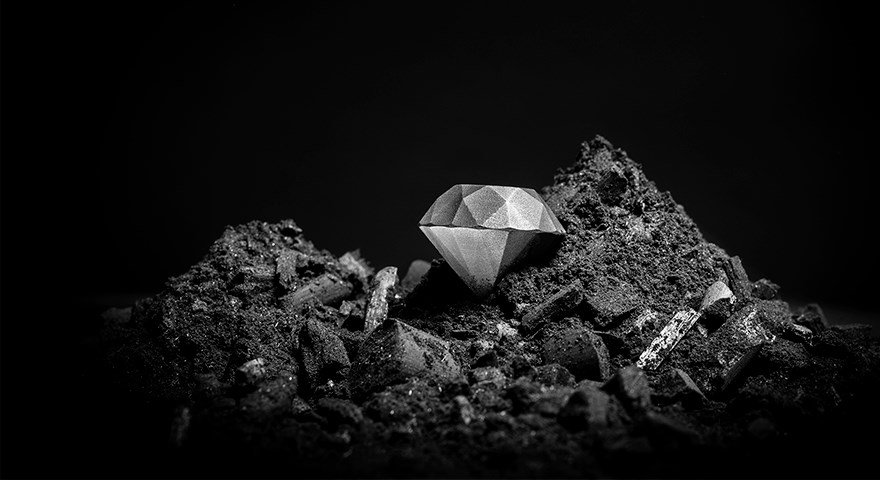3D printed diamonds: Large companies forecast to spend $3 billion on 3D printing by next year
Sales of products related to 3D printing by large public companies is expected to grow by 12.5 percent to top $3 billion by 2020, according to a study from Deloitte.
Much of it will come from greater use of metal parts in applications beyond rapid prototyping – manufacturing and / or repair.
As background, the global manufacturing sector’s revenue as a whole totals approximately $12 trillion annually.
Deloitte says 3D printing is experiencing this inflection point likely because companies across multiple industries are increasingly using it for more than just rapid prototyping.
3D printers today are capable of printing a greater variety of materials, which mainly means more metal printing and less plastic printing, although plastic will likely still predominate.

3D printers now produce objects faster than they used to, and they can print larger objects – build volume. A steady stream of new entrants is expanding the market.
3D printing is considered “an essential ingredient” in Industry 4.0, the marriage of advanced production and operations techniques with smart digital technologies that is being heralded as the “Fourth Industrial Revolution”.
The technology has advanced so much that a company called Sandvik has been able to produce what it claims is “the first ever 3D printed diamond composite” using the method (pictured above).
Mikael Schuisky, head of R&D and operations at Sandvik additive manufacturing, says: “We now have the ability to create strong diamond composites in very complex shapes through additive manufacturing, which fundamentally will change the way industries will be able to use this material.
“As of now, the only limit to how this super-hard material can be shaped and used is down to the designer’s imagination.”
Sandvik says the super-hard material can be 3D printed in highly complex shapes and can revolutionize the way industry uses the hardest natural material on the planet.
Susanne Norgren, adjunct professor in applied materials science at Uppsala University, which worked with Sandvik on the diamond: “Sandvik’s 3D printed diamond composite is a true innovation. It means that we can begin to use diamond in applications and shapes never conceived possible before.
“Just imagine what it could do to industries, when it is possible to print anything, in any shape – in diamond.”
While this diamond does not sparkle, Sandvik says it is “perfect for a wide range of industrial uses”.
Diamonds that sparkle – enough to be sold to a consumer market – can be made artificially, using machines that are similar in principle to 3D printing in that they are “grown”, rather like depositing layer upon layer of material as in additive manufacturing.
One of the process used for producing consumer diamonds is called “chemical vapour deposition”, which puts it in the general area of 3D printing.
Lab-grown or synthetic diamonds manufactured in this and other ways have become popular in the consumer market, and are changing the traditional view of diamonds.
Synthetic diamonds have been available for a few years, but the world’s leading diamond supplier – De Beers – refused to sell them until last year.
Further, the Indian diamond bourse is planning to allow trading in synthetic diamonds, alongside mined, naturally formed diamonds.
So there’s a lot going on in the 3D printing market, and a lot of traditional markets are being fundamentally changed.
Unlike established industrial supply chains, however, 3D printed parts are literally popping into existence and, as such, are arriving with no tangible or reliable record of design, construction, or prior use.
This presents an emergent need for innovation in parts authentication, especially in mission-critical industries like energy and aviation.
Together with industry partners, NXP is pioneering technology that provides secure identification of 3D printing machinery and, thereafter, parts produced by it.
There are two aspects to securing 3D printing: first, the integrity of 3D printing data, and second, certification of machinery and parts.
NXP says it is undertaking to innovate an end-to-end security solution for 3D printing for mission-critical industries.

